calsfoundation@cals.org
Zinc (Boone County)
| Latitude and Longitude: | 36°17’07″N 092°54’50″W |
| Elevation: | 879 feet |
| Area: | 0.75 square miles (2020 Census) |
| Population: | 92 (2020 Census) |
| Incorporation Date: | March 10, 1904 |
Historical Population as per the U.S. Census:
|
1810 |
1820 |
1830 |
1840 |
1850 |
1860 |
1870 |
1880 |
1890 |
1900 |
|
– |
– |
– |
– |
– |
– |
– |
– |
– |
– |
|
1910 |
1920 |
1930 |
1940 |
1950 |
1960 |
1970 |
1980 |
1990 |
2000 |
|
173 |
144 |
188 |
119 |
99 |
68 |
58 |
113 |
91 |
76 |
|
2010 |
2020 |
|
|
|
|
|
|
|
|
|
103 |
92 |
|
|
|
|
|
|
|
|
Zinc is a small town in eastern Boone County, east of Harrison (Boone County) and south of Lead Hill (Boone County) on the Sugar Orchard Creek. As the town’s name suggests, it was once a center for the mining of zinc and lead.
The area around Zinc was sparsely settled until after the Civil War. Elias Barham was the first settler to claim the land where Zinc is located; his land purchase dates to 1890, although he may have lived there earlier. Barham raised cattle, grew crops, and operated some small mines. As the mining operation drew miners into Boone County, Barham opened a general store with his brother, George Solomon Barham. Intending to create a mining town, Barham sold some of his land to T. R. Cave in 1900. Cave sold an interest in some of that land to J. L. Rogers. A post office was established at Zinc in 1900, and the investors advertised lots for sale in the Harrison Daily Times the next year.
In 1903, the land investors entered a deal with the White River Railway Company to build a line through Zinc and establish a depot in the community. With the arrival of the railroad, mining operations expanded rapidly. The investors established the Sugar Orchard Mining and Realty Company, and Barham expanded his store. The town was incorporated in 1904.
Prices for zinc were high during the first two decades of the twentieth century, particularly during the years of World War I (1914–1918). The principal ore from the mines near Zinc, silicate of zinc, has been described as “the best grade of slab zinc that could be smelted from virgin ore.” State geologist John Casper Branner had commented on the high quality of lead and zinc found in northern Arkansas in his report of 1892. Many miners lived in the area of Zinc, some in town but more in tents near the mines. Barham’s store flourished, and other stores were also established. The town had a public school, a newspaper, telephone service, a barber shop, a soda fountain, and more than one hotel, as well as stores, the railroad depot, and the post office. Town histories do not mention the establishment of any churches. The school was a two-story building with one large room covering the second floor and two rooms on the lower level.
During the Flood of 1927, homes and businesses were damaged in Zinc, as were the railroad tracks. During the rebuilding of the town, a swinging bridge for pedestrians was constructed high above the Sugar Orchard Creek. This bridge, which is listed on the National Register of Historic Places, collapsed in June 2014 but was made operational again in 2015. The home of Elliott Barham (son of the town’s founder and heir to his store) is also on the National Register. Around 1927, the Zinc school was consolidated into the Bergman (Boone County) school district, but classes continued to be taught in the school house in Zinc for many years.
Following the end of World War I, and especially during the Depression, prices of lead and zinc plummeted, and the mines around Zinc were closed. Many miners moved on to other places and other jobs. A tomato cannery operated in Zinc during the 1930s. The railroad, by this time part of the Missouri Pacific network, continued to run trains through Zinc. The population of the town dwindled, and more businesses were closed. After Elliott Barham died in 1952, Dewey Moore took over operating the last store in Zinc, which was open until the late 1960s. The post office was closed in 1975.
Boone County achieved some notoriety in the twenty-first century as home to a chapter of the Knights of the Ku Klux Klan, and although Zinc is often linked to the Klan by the media, the actual headquarters is located outside the municipality’s boundaries. A Klan rally was held in the area of Zinc and South Lead Hill (Boone County) in 2009; it attracted about fifty people.
For additional information:
Boone County Historical & Railroad Society, Inc. History of Boone County, Arkansas. Paducah, KY: Turner Publishing Company, 1998.
Campbell, Treva Pauline Barham. “Growing Up in Zinc.” Boone County Historian 1 (April–June 2003): 13–17.
Steven Teske
Butler Center for Arkansas Studies
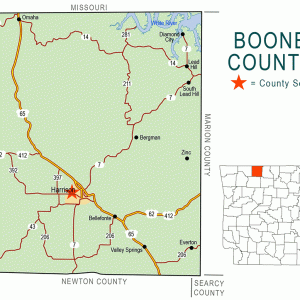
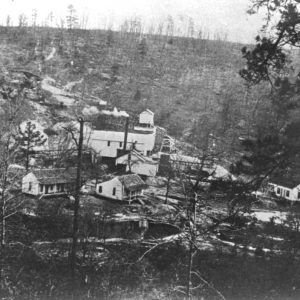
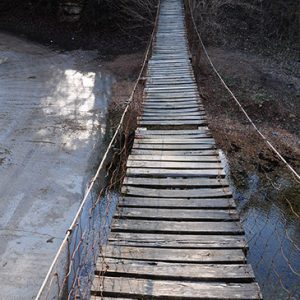
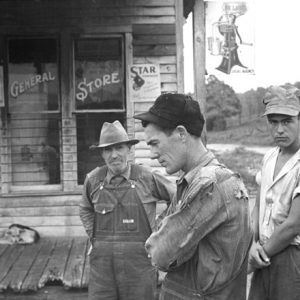
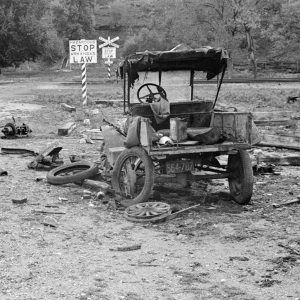




Does anyone know the names of the three men standing in front of the general store?
My father was born in Zinc and has lived here since his birth. As a proud resident of this tiny little town of Zinc, I want to say that the KKK does not have rallies in Zinc. And as a town council member of Zinc, I want to state that the Klan lives between Lead Hill and Zinc, and has no association with the town or its citizens.
The town had several investors. Its principal founder was Judge Dennis W. (D. W.) Cave. His brother, Thomas R. Cave (a physician); his son-in-law, James L. Rogers (a wealthy banker from Kansas); and a wealthy investor and railroad agent named Richard X. (R. X.) DeGraw were responsible for the Sugar Orchard Mining and Realty Company, which was incorporated and located in Zinc. It was this company that had the towns lots platted and sold. True, Elias Barham sold land to T. R. Cave and to J. L. Rogers, but the two men quickly sold the land to this company so the four of them could start the town. But, D. W. Cave was the visionary and primary driving force behind it all.
Also, I do want to clarify that no Klan rally has ever been held in Zinc. To this, I can personally attest. The Klan does have a compound near Zinc, but it is not within the city limits nor is there any kind of association between this group and Zinc. That the two are located closely together is purely a coincidence.